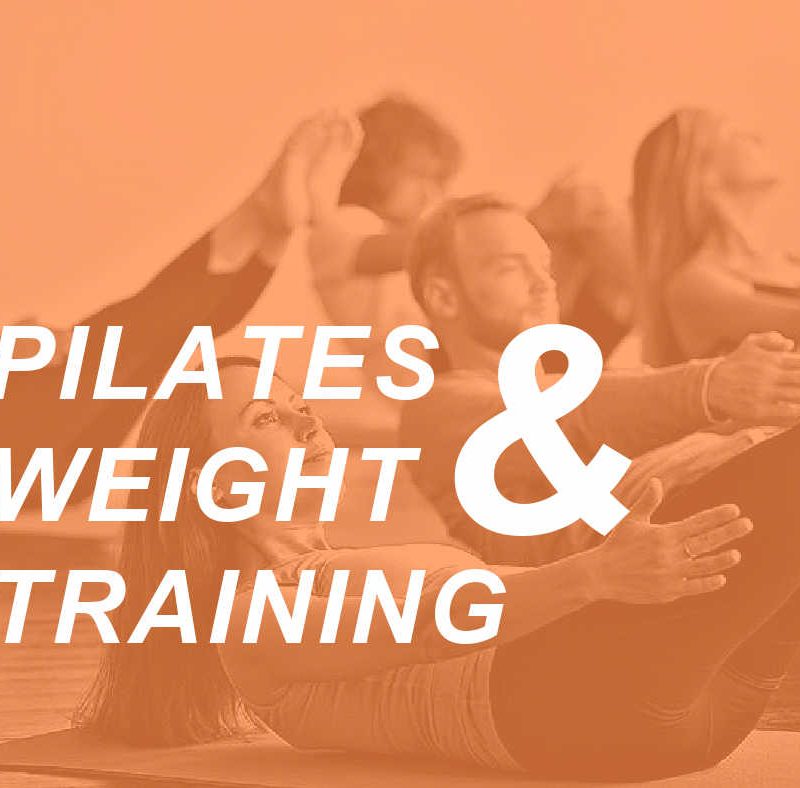
When personal trainers hear the word “Pilates” specific images may be conjured up, such as a quiet room full of women extending their bodies in any variety of positions, or perhaps teetering on reformers as they strive to improve their balance, posture, and core stabilizers.
While these assumptions aren’t far off the mark, the art of Pilates offers so much more than meets the eye including the ability to enhance even the most strenuous of bodybuilding workouts.
The Man and the Mission
Joseph Pilates, a boxer and self-defense instructor, created his namesake movement discipline in the early 1900s. After carefully watching as his cat stretched and elongated its body, Mr. Pilates reflected on the importance of developing the core muscles of the human body. By requiring participants to focus upon each and every muscular shift, the discipline of Pilates encourages not merely flexibility but also awareness, breathing techniques, and ideal posture.
Research on the exercise physiology/human kinetics aspects of Pilates offers some interesting findings. One such study examined the effects of Pilates exercises on abdominal endurance, hamstring flexibility, upper-body muscular endurance, posture, and balance.
Fifty subjects were recruited to participate in a 12-week Pilates class, one hour in duration, 2 times per week. Participants performed 25 exercises that comprise a basic mat routine, relatively low in intensity. The moves focused on muscular endurance and flexibility of the abdomen, low back, and hips during each session. As the study came to a close, results revealed a significant level of improvement in most of the aforementioned variables.
Pilates versus Cardiovascular Exercise
Many participants new to a Pilates class question its ability to truly “count” as aerobic exercise. To that end, another study compared the effects of Pilates exercises, aerobic exercises, and sessions blending the two disciplines, with respect to fatigue, depression, aerobic capacity, pain, sleep quality, and overall quality of life. Pilates movements produced similar effects to those brought about with aerobic exercises. While the Pilates movements themselves may not cause a sustained increase in one’s pulse, the benefits seem quite similar.
Pilates may serve as an alternative physical training method for individuals battling obesity. In a study spanning eight weeks, subjects engaged in an hour of either Pilates classes or aerobic walking, three times each week. The unique Pilates exercises afforded the ability to promote positive effects in cardiorespiratory fitness, body composition, abdominal strength and flexibility. When compared to results from the aerobic exercise participants, those in the Pilates group also showed greater improvement in oxygen uptake.
Joint Pain
A controlled trial recruited 42 women currently living with rheumatoid arthritis and/or fibromyalgia. Subjects participated in either mat Pilates or aquatic aerobic exercises, twice a week for 12 weeks. Participants of both groups reported significant improvements in symptoms over the duration of 12 weeks, with no notable or outstanding exceptions. For those joint pain sufferers unable or unwilling to gett in the water, Pilates offers a suitable alternative.
The Muscle Mindset
Serious bodybuilders tend to prioritize developing biceps, chest, and quadriceps muscles, and perhaps endeavor to attain a “six-pack” with little thought to deep core musculature. Yet, the core stabilizers – those muscles found in the abdomen including the TVA and pelvic floor, lower back, and hips — perform a valuable service when lifting heavy loads: protecting the integrity of the back.
A basic weightlifting regimen aimed at hypertrophy involves mostly concentric movements, which by their very nature cause muscle tissue to shorten. As a result, gains in lean muscle mass and strength often come at the expense of flexibility. Pilates movements can compensate for that by making use of lighter weight loads and more eccentric movements, thus lengthening the musculature.
Fitting In Pilates Without Overtraining
Trainers often tout the phrase “exercise volume”, helping clients understand that pushing themselves harder or more frequently can produce the benefits they seek. However, a delicate balance exists between a dedicated athlete and an overzealous one, beyond which the amount of exercise performed does more harm than good. This tipping point, wherein the frequency of fitness endeavors suddenly limits/impairs performance, often occurs innocently enough, either by insufficient recovery time or poor quality refueling. Known as overtraining syndrome (OTS), such a pattern can over time prove detrimental to the clients’ goals of improved fitness.
Fitness experts agree that, although very different in nature, engaging in Pilates and strength training on the same day can put an athlete at risk of overtraining. At the very least, such a practice often proves counterproductive. Trainers must sometimes remind go-getter clients that without appropriate rest, hypertrophy cannot progress.
According to the NFPT, lean muscle mass needs sufficient opportunity to grow stronger and thicker with adequate recovery. In an effort to maximize both strength and balance/flexibility/postural awareness, trainers might consider drafting workout programs that allow for alternating Pilates exercises with strength training, making sure to include a full day of recovery.
A sample weekly schedule might include the following ~
- Monday: Lower-body training
- Tuesday: Pilates
- Wednesday: Upper-body exercises
- Thursday: Pilates
- Friday: Full-body workout
- Saturday: Pilates
- Sunday: Rest
Another option could place the rest day in the middle of the week, depending upon the client’s schedule.
Training the Trainer?
Now the question arises as to whether a certified personal trainer must also show proficiency in the art of Pilates, in order to appropriately draft such a combination program for clients. This author never aspired to earn a certification in Pilates, relying rather upon personal experience as well as the fundamental movement patterns of the human body. We need not put our clients through the contortionist positions one associates with work on a Pilates reformer. The exercises outlined in a basic mat Pilates format can definitely suffice for the purposes we seek, and are fairly simple to demonstrate for clients.
Putting It All Together
If trainers feel the need to diversify a client’s workout or to encourage flexibility in a muscle-bound individual, Pilates movements serve as a simple yet effective tool in achieving maximum results. By alternating training formats, all dimensions of the human body, from postural awareness to bench-pressing prowess, receive the attention they deserve.
References:
https://www.acefitness.org/education-and-resources/lifestyle/blog/6466/overtraining-9-signs-of-overtraining-to-look-out-for/
https://www.livestrong.com/article/468382-is-doing-weights-pilates-considered-over-training/
https://darkironfitness.com/add-pilates-to-your-weightlifting-program/
https://pubmed.ncbi.nlm.nih.gov/30842893/
https://pubmed.ncbi.nlm.nih.gov/32252822/
https://pubmed.ncbi.nlm.nih.gov/33094465/
https://pubmed.ncbi.nlm.nih.gov/20145572/








